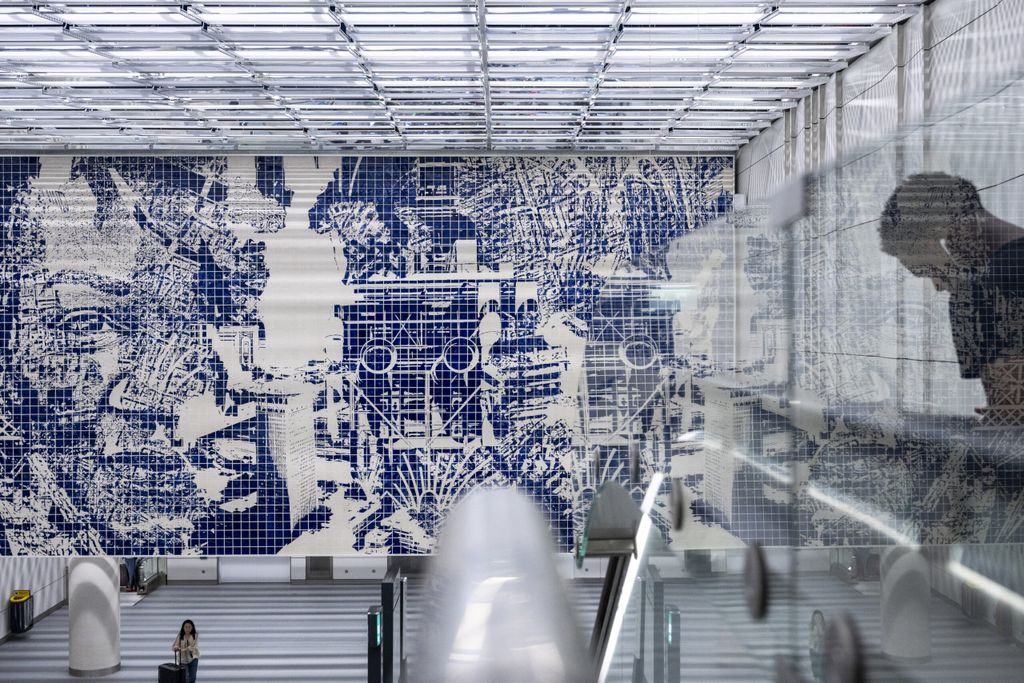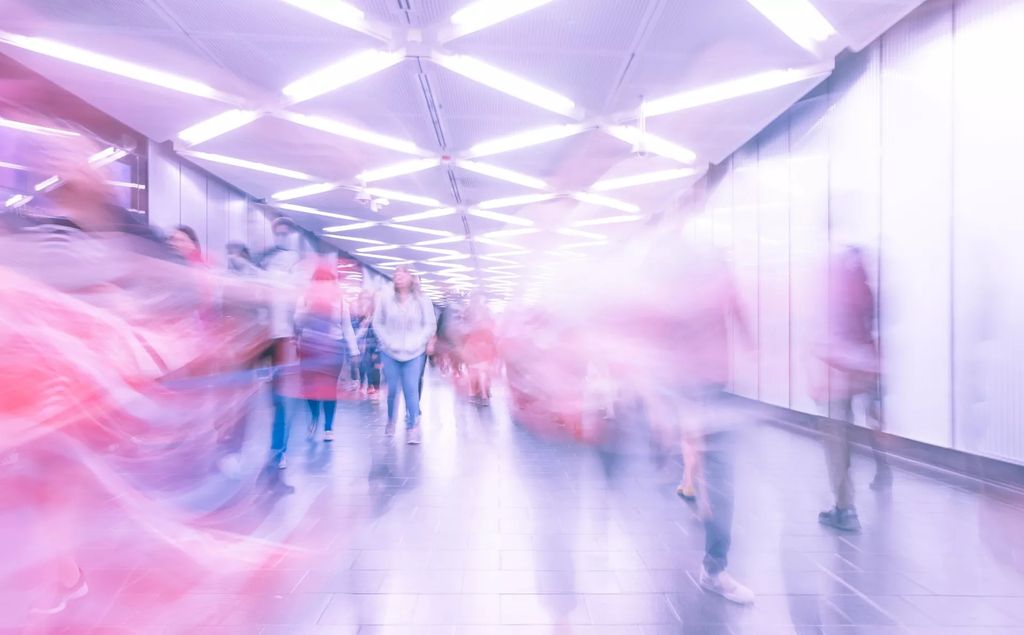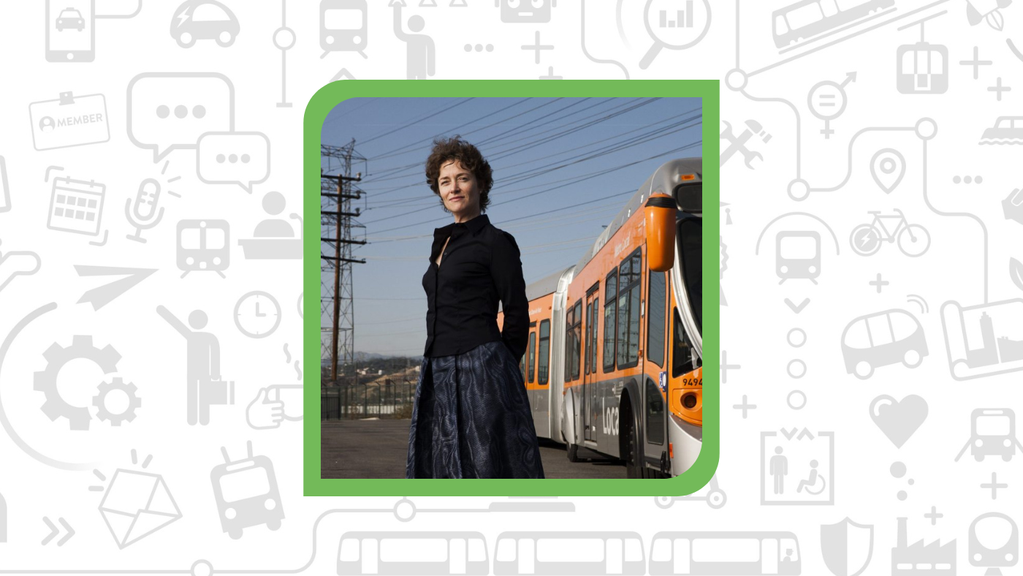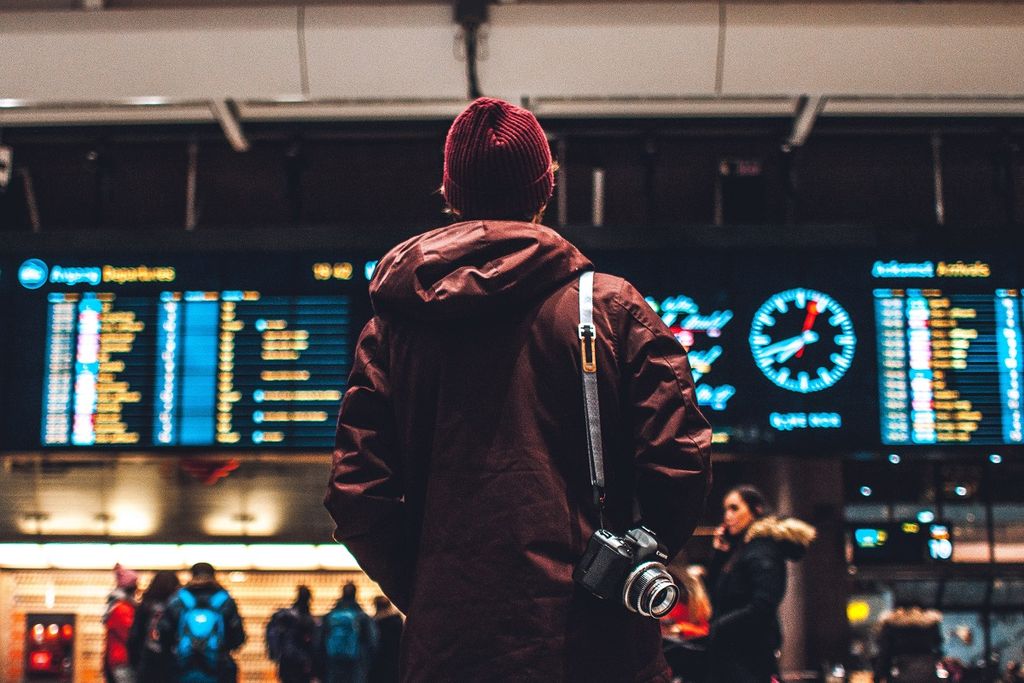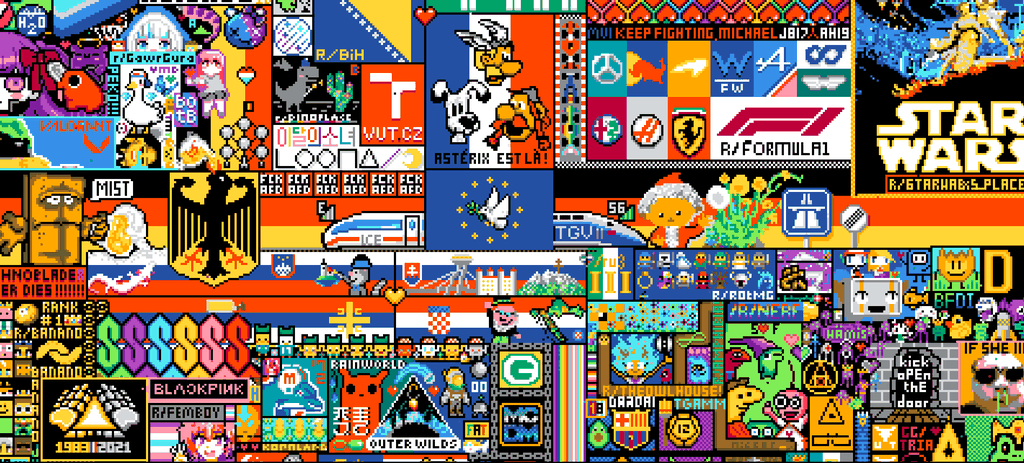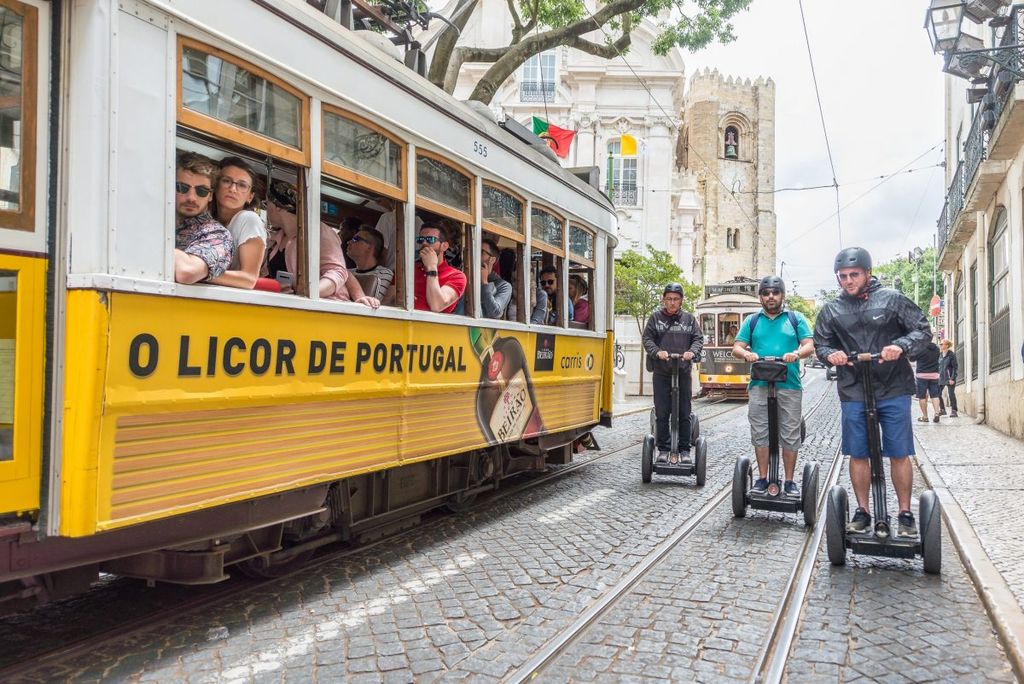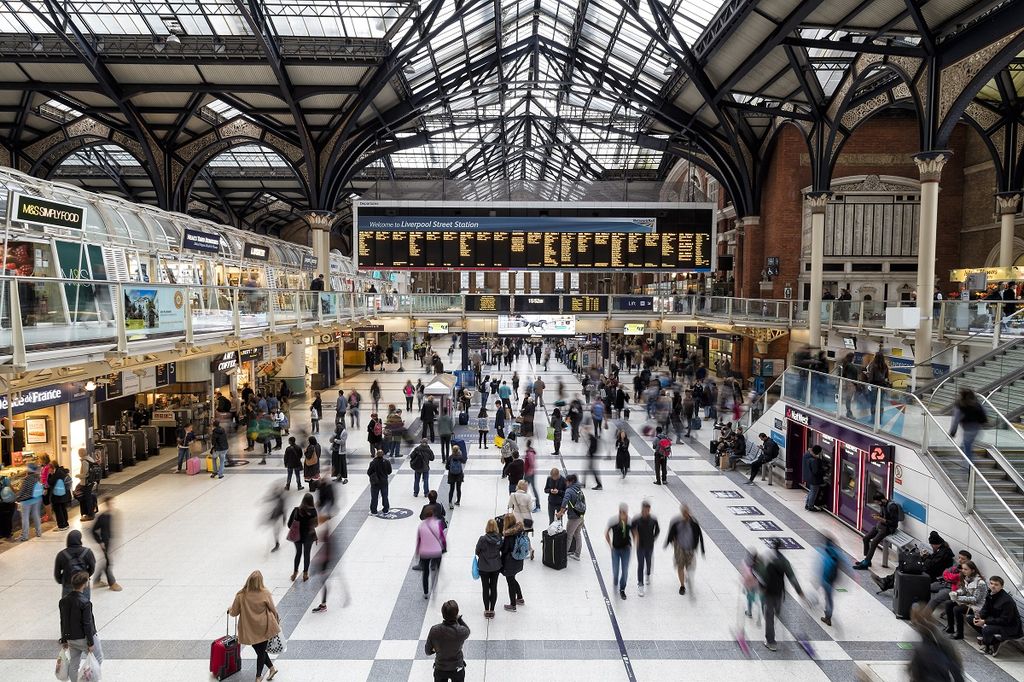
How to create better and more inclusive stations? Stations of the Future project reaches next stop with second study
Stations of the Future
Whether for a daily commute to work, picking up a loved one, or the start of a long holiday: public transport stations hold a central place in our lives. Being quite literally the gateway to many cities, stations perform a different role than that of ‘just’ a transport hub: they can be true cultural hubs and have vital implications to a city’s planning, functionality and character.
With stations’ key importance in mind, UITP and KONE, a global leader in the elevator and escalator industry, launched the Stations of the Future project in 2022, investigating how stations can be best designed or adapted to foster their central place in our society.
UITP and KONE have published a new study “How to make stations lively hubs for citizens and public transport users: Solutions”, offering potential solutions for stations to meet the growing needs of its users. The study builds on the first report, which highlighted trends impacting the role and functions of stations.
Creating a better passenger journey
The new report examines stations from two perspectives: that of the user and that of the sector. It identifies different solutions associated with each stage of a user’s journey through the station. The study uses journey mapping to understand the main stages of passenger experience at the station and to identify essential touchpoints for improvement.
To enhance the user experience of stations and attract more people, transport station operators must address several key challenges that the project has identified through research and workshops:
- Managing people flows
- Improving connectivity with the surrounding urban environment
- Enhancing station amenities for greater user well-being.
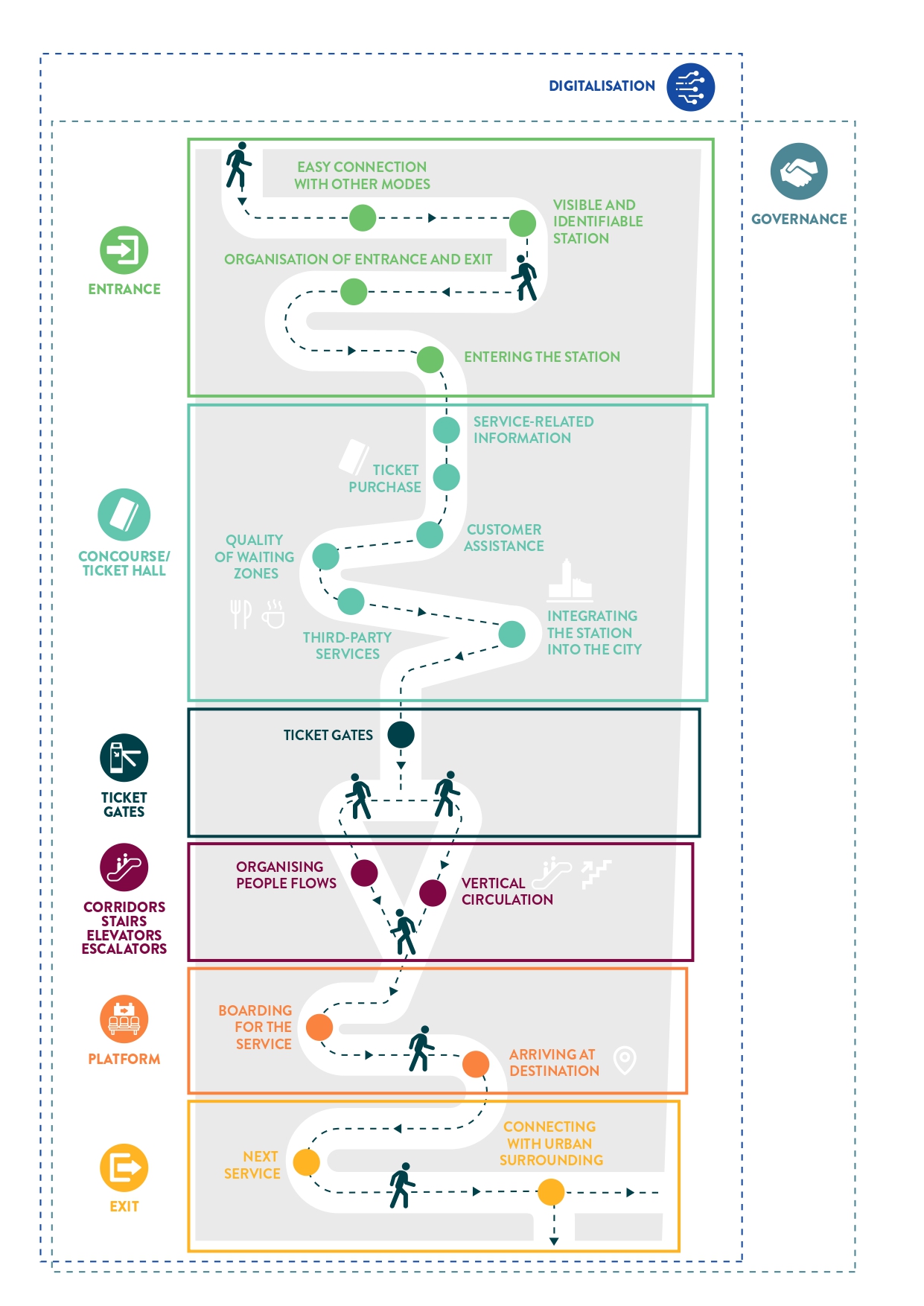
In response to these challenges, the solutions presented follow the station user’s journey flow. This covers key areas of the station, including the entrance, concourse, ticket hall, ticket gate area, corridors, stairs, elevators, escalators, platform and exit.
Below, we set out the passenger journey, and give a small sneak peek into some of the solutions.
Curious to see all the solutions? Read the full report here.
Arriving and finding your way
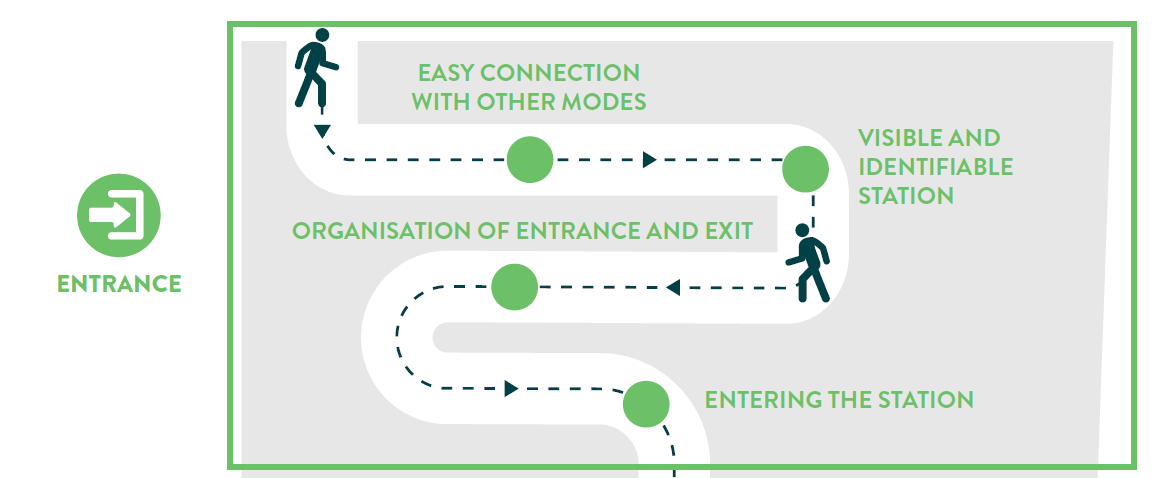
Dedicated drop off areas for shared mobility: Dedicated drop off zones should be provided for the shared vehicle services available in the area. In order to promote sustainable mobility and to make efficient use of urban space, environmentally friendly transport modes and shared services should be prioritised.
Iconic Station Identifier: A single identifier, common to all stations in the area, will help indicate the station entrance.
Spending time

Multiple payment options: Numerous forms of payment should be accepted. Queues at ticket vending machines or service counters can be reduced if passengers can pay for their journey in advance, or pay directly at ticket gates with bank cards or mobile phones.
Design for acoustic levels: Stations can be noisy places – the number of people, the announcements and the vehicles can make it impossible to hear clearly what needs to be heard.
Corridors, stairs, elevators, escalators

Defined walking directions: Regulating the direction that station users are moving in will reduce conflict points and provide a smoother journey for all.
Smart elevators and escalators: Connected elevators and escalators as well as other installations can be continuously monitored to ensure their availability.
Global best practices
In addition to the solutions, the report has also collected best practices and use-cases from around the world, demonstrating the most effective approaches to station development and enhancement.
The stations of the future will be improved versions of those of today and tomorrow, and this report will be of interest to anyone interested in public transport, station development and the future of our cities.
exclusive resources

